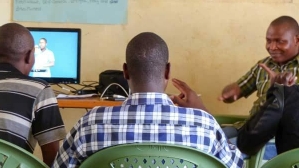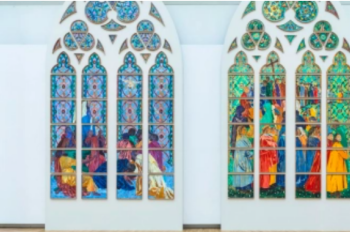
DOOR International is conducting trials with artificial intelligence (AI) to see how this technology can serve ministry to the Deaf and hard of hearing (hoh). However, putting AI integration into practice is not simple.
President of DOOR International Robert Myers said that attempting to use an AI to translate a written language to a visual language, such as sign language, is a much bigger technical challenge compared to translating one written language to another.
“Even if you just consider how many megabytes it takes to send a video through email versus a picture or a bunch of text through an email,” he explained in an interview with Mission Network News (MNN), “a video is much, much more complex, much thicker in terms of the technology that’s required.”
However, AI solutions do have advantages. For example, an AI-generated avatar could replace a real person in a video. For Deaf Christians in countries where Christianity is restricted, not showing individuals’ faces significantly reduces risk.
Myers referenced a project related to Wycliffe Bible Translators called Chameleon, which creates an avatar in real-time “in order to mask someone’s identity.” He said another organization attempting this uses a technology “that’s a little like a deep fake.”
DOOR International is exploring using AI to create artwork for sign language Bible translations. Deaf artists already do this work. By adding AI, artists could focus on proofing and editing the art, and thus produce more art than they could before. The proofing process is complex because everything from artwork and backgrounds presented in videos, to the facial expressions of the signer must show the right message with the appropriate tone. The proofing process must be even more meticulous when translating Scriptures into sign languages, which are typically released on video.
People with skills in AI are needed in Deaf ministry. However, Myers explained that working alongside the Deaf goes beyond learning a sign language. Ministry with Deaf communities is very specialized. Help can be channeled most effectively in partnership with Deaf ministries, like DOOR International, that can connect people skilled in AI with Deaf leaders with backgrounds in technology. Then they can work together to see what is needed and how technology can best help.
“As hearing people, one of the most effective things that we can do is bring information and bring possibilities into the Deaf space,” Myers told MNN. “Then [we can] help Deaf people bridge that gap, and then allow them to begin to dream and figure out what would be most effective in their environments.”
Only 2% of the world’s 70 million Deaf people follow Jesus, according to DOOR International. Wycliffe reports that of the 380 known sign languages in the world, only one has a complete Bible translation, leaving millions without access to the Gospel in a language they understand.
Myers stressed that most Christians around the world do not know that many Deaf communities have not yet been reached with the Gospel nor how technology could help more Deaf people to see the Gospel in their own sign language sooner. He encouraged Christians to raise awareness by sharing about this on social media and inviting others to join them in prayer for Deaf communities.





